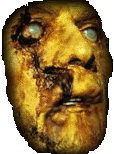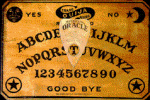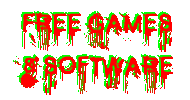
The efficient and skeptical freelance insurance investigator John Trent is hired by the publisher Jackson Harglow to find where the famous writer Sutter Cane might be. After writing a series of best-sellers in the horror genre, affecting the reason and causing disorientation, memory loss, and paranoia in readers, Sutter has simply vanished near the release of his new novel, "Horror in Hobb's End." There is mass hysteria of his anxious fans waiting for the new release, and John believes that his disappearance is a marketing strategy. John follows his instincts and travels with Cane's editor, Linda Styles, to New Hampshire, seeking for the apparently fictional town of Hobb's End. While driving along in the night, Linda reaches Hobb's End, and John discloses that Sutter Cane has unleashed a powerful evil force in the black church of the mysterious town, and his twisted imagination is changing the reality and perception of those who read his novels.
TRIVIA
# The small town is named "Hobb's End", an in-joke reference to the subway station where the alien ship is excavated in the movie Quatermass and the Pit (1967).
# After Sutter Cane says "Did I ever tell you my favorite color is blue?" It is realized that throughout the entire movie, whenever an actor has a close up, their eyes are blue, proving Sutter Cane's power.
# John Trent occupies cell number 9 at the asylum, and rents room number 9 at the Pickman Inn in Hobb's End.
# Contains many references to H.P. Lovecraft's stories, for example is the Name of the hotel and hotel owner "Pickman", a reference to the short story "Pickman's Model".
# The Sutter Cane character is clearly based on John Carpenter's friend Stephen King, even referencing King's New England roots, with Hobb's Corner filling in for King's Castle Rock. Carpenter directed a film version of King's Christine (1983). Additionally Michael De Luca had previously written the screenplay for the King adaptation The Lawnmower Man (1987). However, the characters say that Sutter Cane is even more popular than Stephen King.
# This is the third film in what John Carpenter has called his Apocalypse Trilogy, the first being The Thing (1982) and the second being Prince of Darkness (1987).
# The building used as the mental institution at the beginning of the film is actually a water filtration plant in the Beaches area of Toronto. It has been the scene of other movies, including the island fortress in Undercover Brother (2002). Filming can no longer take place inside this building following the terrorist attacks on the USA of 11 September 2001.
# The silly monster movie that Trent sees on the television was a real movie. The scene was from Phil Tucker's Robot Monster (1953).
# The scene towards the end of the film that featured dozens of monsters coming from the other side where a combination of men in suits, animatronics and a full-size "Wall" of creatures. It took over 30 people to operate the monsters.
# The Mrs. Pickman creature was shot as a miniature. Originally it was a man in a suit prosthetic, but John Carpenter didn't find it convincing enough.
# When Jürgen Prochnow lets the monsters from the other side into our world, originally in the script the entire town was sucked into the other side. When this proved to be too costly, an effects artist over at Industrial Light and Magic recommended that instead he "tears" himself apart like paper.
# The R.C. Harris water filtration plant was also used for the exterior shots of the asylum.
# Sam Neill, who was originally a director himself, suggested to director John Carpenter that he shoot some of the scenes in the hotel from above.
# The car keys that Julie Carmen swallows when Sam Neill is trying to escape from town were made out of pasta.
# Robot Monster (1953), which Sam Neill is watching at the end of the movie, is one of director John Carpenter's favorite monster movies as a kid.
# During the scene where a hand breaks through the glass of Sam Neill's cell, a piece of fake glass cut his neck.
# The effect of Julie Carmen spinning her head around was done by having a contortionist stunt-double wear an up-side down prosthetic mask of Carmen's face. Since the stunt double couldn't see, the filmmaker had to guide her on where to go by sound.
# Hobb is an old word which was used to refer to the devil
# The six Sutter Cane novels which Trent uses to track down the town of Hobb's End are the following: "The Hobb's End Horror", "The Feeding", "The Whisperer in the Dark", "Something in the Cellar", "The Breathing Tunnel" and "In the Mouth of Madness".
# References to the "Old Ones" by Sutter Cane, along with certain representations of monsters printed on his books and latter brought to life, are allusions to The Cthulhu Mythos - a series of stories by H.P. Lovecraft and continued by other writers into modern times. In this sense, one could consider "In the Mouth of Madness" John Carpenter's own contribution to The Cthulhu Mythos.
Source YouTube,IMDb
















No comments:
Post a Comment